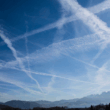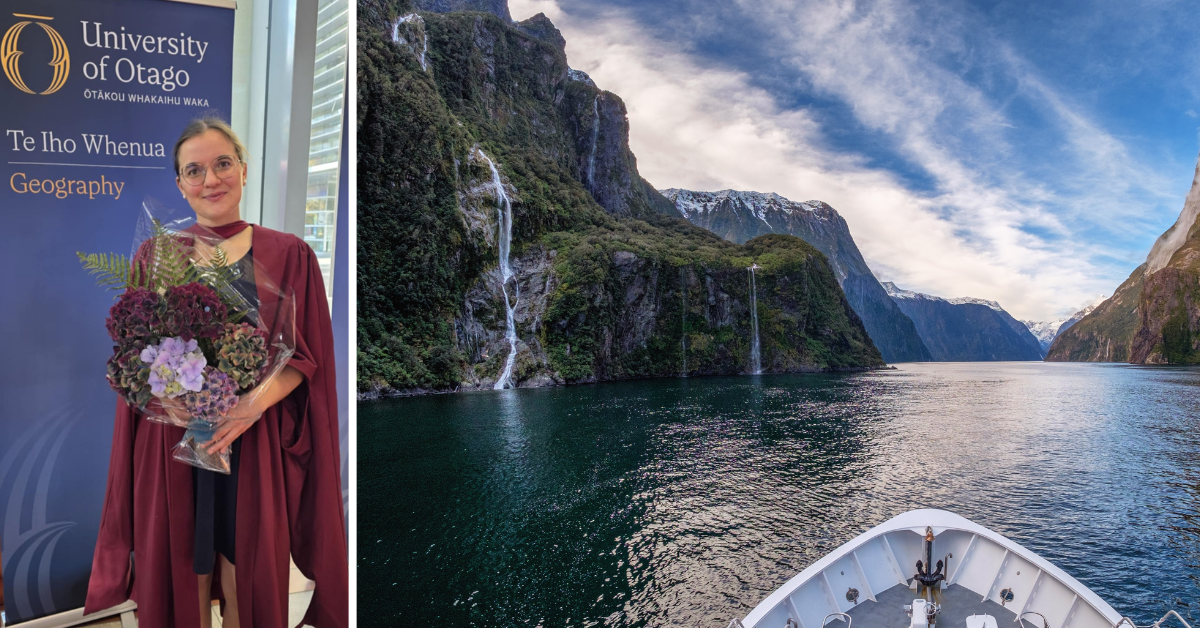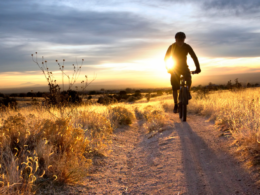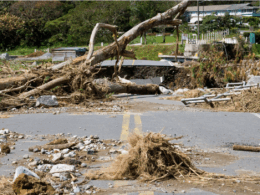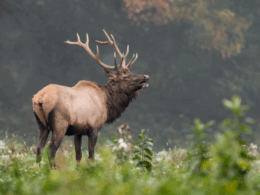It is no coincidence that some of the most breathtaking and iconic attractions in Aotearoa are also the most geologically active. Tourism destinations such as Rotorua, Queenstown, Aoraki and Piopiotahi offer awe-inspiring visitor experiences, but also the risks of natural disaster. So how can we strengthen the connections between tourism operators and emergency managers so that when disaster strikes, communities and visitors alike are better supported?
Summary of the interview:
Disaster risk management in tourism has been the subject of a PhD research project conducted by Dr Lucia Danzi, who is now a Postdoctoral Research Fellow at the University of Otago’s Centre for Sustainability. Lucia has spent the past four years exploring exactly this question.
Her PhD was fully funded by the Resilience to Nature’s Challenges research programme under the primary supervision of Associate Professor Caroline Orchiston at the University of Otago. Using mixed-methods social network analysis she mapped and explored how disaster preparedness groups like the Fiordland Hazard Working Group in Milford Sound and Tourism Operator Responders in Queenstown teamed up during the 2020 floods and through COVID-19 to share resources, coordinate logistics, and protect visitors’ safety.
Recently she has developed two resources to provide actionable advice for the visitor sector and emergency management in Aotearoa New Zealand, and I am delighted that today she joins me to talk about her research.
[James then interviews Lucia about her work, including …]- Lucia’s background and what brought her to study disaster resilience in Aotearoa.
- Her two recent doctoral research outputs.
- The “big takeaway” from this work.
- Why disaster risk management in tourism is so important right now.
- The Fiordland and Queenstown case studies.
- The most pressing challenges groups face.
- Recommendations to tourism organisations.
- How practitioners and policymakers can get started.
- Lucia’s hopes for the impact of these resources.
Ngā mihi – thank you Lucia.
For more on Lucia’s work, including her Policy Brief and Research Summary, follow the links provided in the transcript on my website jameshigham.com/pod, where you will also find a link to her open-access article on social network structures in tourism disaster management – published in the Journal of Travel Research.
You can also contact Lucia at lucia.danzi@otago.ac.nz

REFERENCES
Policy Brief and Research Summary
Danzi, L. (2025). Enhancing Disaster Resilience through Collaborative Networks in Tourism and Emergency Management (Policy Brief). University of Otago. https://drive.google.com/file/d/1po5lnrsr0CEuKEwvGtRUKwzw_jyckGB2/view?usp=sharing
Danzi, L. (2025). Inter-organisational Collaborative Networks in Tourism Disaster Management (Research Summary). University of Otago. https://drive.google.com/file/d/17lOvntQzrBfFEGaTqC3v9H2IDF760VSy/view
Journal articles
Danzi, L., Orchiston, C., Higham, J., & Baggio, R. (2024). Tourism Disaster Management: A Social Network Analysis of Nature-based Destinations in Aotearoa New Zealand. Journal of Travel Research. https://doi.org/10.1177/00472875241268623
Danzi, L., Orchiston, C., Higham, J., Baggio, R., (2024). Formation and Development of Tourism Disaster Management Networks: From Preparedness to Response. Manuscript submitted for publication (Under review) to the Journal of Sustainable Tourism.
Danzi, L., Orchiston, C., Higham, J. (2024). Effectiveness and Sustainability of Collaborative Networks in Tourism Disaster Management. Manuscript submitted for publication (Under review) to the International Journal of Disaster Risk Reduction.


